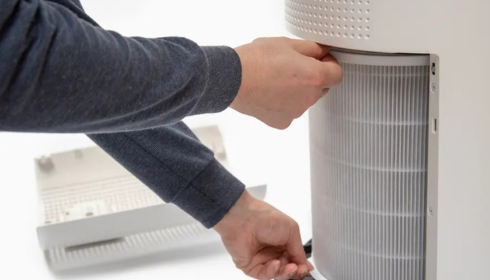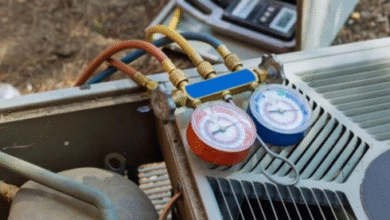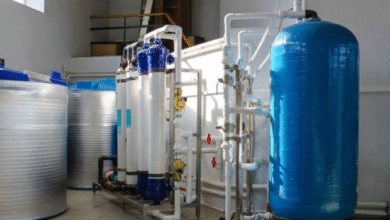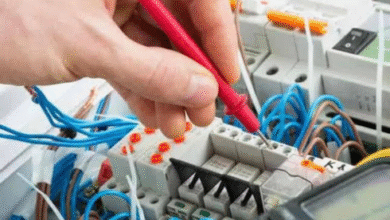Breathing Better at Home: Why Clean Air Matters More Than Ever

I don’t know about you, but lately I’ve been thinking a lot about the air we breathe indoors. Maybe it’s because I spend most of my day at home working on a laptop, or maybe it’s just the constant reminders about pollution, wildfires, and seasonal allergies popping up in the news. Whatever the reason, I’ve realized that the invisible world floating around in my living room has more power over my health than I used to admit.
We worry about what’s in our food, we obsess over drinking clean water, yet we tend to shrug when it comes to the air that circulates through our homes. But air isn’t just air—it carries microscopic particles, allergens, dust, and sometimes even harmful chemicals that sneak in unnoticed. That’s where the conversation about improving indoor air quality starts to get real. When the air in your home is compromised, you feel it—fatigue creeps in, allergies flare up, and even your ability to focus seems to slip.
The Hidden Pollution Problem Indoors
Most of us think of smoggy highways or smoky factories when we hear the word “pollution.” Yet studies repeatedly show that indoor spaces can be two to five times more polluted than the outdoors. Strange, right? But when you think about it, it makes sense.
Homes are built to keep outdoor weather out—windows sealed tight, doors insulated, ventilation minimized to save energy. That’s good for your electric bill, but not so great when you’re trapping everything from cooking fumes to pet dander to chemical residue from cleaning products. Add in pollen slipping through an open window or mold growing quietly behind drywall, and suddenly your “safe” home feels less like a refuge and more like a closed jar of stale air.
It’s not about panicking over every speck of dust; it’s about realizing that little changes in your air environment can make a huge difference in how you feel day to day.
Why Clean Air Isn’t Just About Allergies
When I first started caring about home air, I thought it was mainly an allergy issue. Keep the sneezes at bay, prevent itchy eyes, done. But as I dug deeper, it became clear that the stakes are higher. Poor air indoors is linked to respiratory conditions, headaches, disrupted sleep, even long-term cardiovascular problems.
Think of how often we breathe in—roughly 20,000 times a day. Each inhale is a delivery system. If that system is filled with pollutants, you’re basically dosing yourself with irritants nonstop. On the flip side, when the air is clean, breathing feels lighter, energy comes back, and there’s this quiet relief you don’t even realize you were missing.
Where Technology Meets Health
The good news is that homeowners have more tools than ever to fight back. The market for air cleaners and filters has exploded, but it’s not just about buying the first gadget you see online. It’s about matching the right technology to your needs.
For smaller spaces, a standalone unit might be enough. But if you’re serious about long-term health benefits, whole-home solutions deserve attention. That’s where professional air purifier installation comes into play. A well-chosen system connects directly with your home’s airflow, scrubbing pollutants across every room rather than just the corner where you parked a portable device.
It’s easy to underestimate how big a difference proper installation makes. An expert ensures the filter capacity is aligned with your square footage, the system is sealed correctly, and maintenance is straightforward. It’s not glamorous work—you won’t show off your new purifier like you would a kitchen remodel—but you’ll feel the payoff in every deep breath.
The Overlooked Hero: Your HVAC System
There’s also an unsung hero already sitting in your house: your HVAC system. Most people think of heating and cooling when they hear those four letters, but in reality, your furnace and AC ducts are also highways for air quality. When maintained well, they’re allies. When ignored, they’re culprits.
That’s where hvac filtration becomes a deal breaker. A clogged or cheap filter is like leaving your front door half open during a dust storm. It lets contaminants pass through freely, then distributes them across every corner of the house. By upgrading to high-efficiency filters and sticking to a replacement schedule, you’re not only protecting your lungs—you’re extending the life of your HVAC equipment too.
A lot of homeowners treat filter replacement as an afterthought, something you do once in a blue moon when you remember. In reality, it should be part of your routine, just like oil changes for a car. The payoff in comfort and peace of mind is worth every small effort.
Simple Habits That Stack Up
Of course, no gadget or filter can do the whole job alone. Daily habits matter too. Opening windows strategically (when outdoor air quality is good), vacuuming with HEPA filters, washing bedding frequently, and reducing chemical cleaners can all contribute to a fresher home environment. Even small choices—like switching from paraffin candles to soy ones—chip away at hidden sources of indoor pollutants.
It’s empowering once you realize that improving air doesn’t require a massive lifestyle overhaul. It’s about layering small decisions on top of bigger upgrades, creating a healthier rhythm over time.
Breathing Room for the Future
There’s a deeper layer to all this, beyond the practical tips and filters. Clean air is one of those invisible luxuries we often take for granted until it’s gone. I’ve had moments where stepping outside after a storm felt like drinking a glass of crisp water. That same sensation is possible indoors if we care enough to make it happen.
The conversation about air is, at its core, about quality of life. Whether you’re raising kids, working from home, or just trying to carve out a peaceful corner in a noisy world, the air you breathe shapes the experience.
So maybe the next time you catch yourself yawning at your desk or waking up groggy without explanation, don’t just blame the coffee or the mattress. Maybe it’s the air quietly asking for attention. And the good news? With awareness and a few smart choices, giving your home fresh lungs is more achievable than you think.
Final Thoughts
Clean air at home isn’t a luxury. It’s not even a trend. It’s a basic, foundational part of living well in a world that keeps throwing pollutants our way. We can’t always control outdoor smog or seasonal pollen counts, but we can create healthier sanctuaries indoors.
Whether it’s upgrading filters, investing in professional systems, or just keeping up with everyday habits, every effort compounds into something meaningful. At the end of the day, there’s nothing quite as grounding as knowing the simple act of breathing is doing your body good.
So here’s to cleaner air, calmer lungs, and the quiet power of a healthier home atmosphere.



